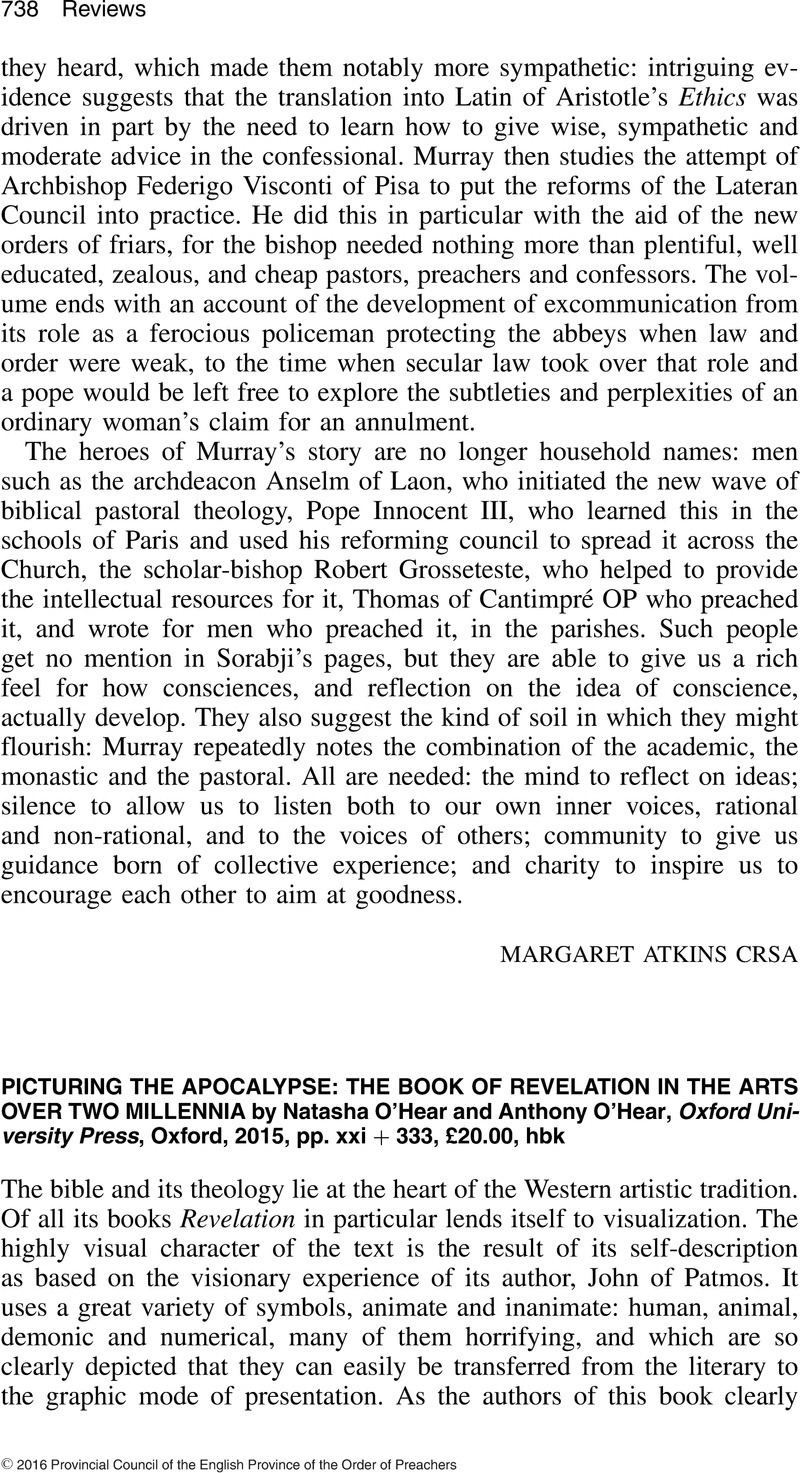No CrossRef data available.
Article contents
Picturing the Apocalypse: The Book of Revelation in the Arts Over Two Millennia by Natasha O'Hear and Anthony O'Hear, Oxford University Press, Oxford, 2015, pp. xxi + 333, £20.00, hbk
Review products
Picturing the Apocalypse: The Book of Revelation in the Arts Over Two Millennia by Natasha O'Hear and Anthony O'Hear, Oxford University Press, Oxford, 2015, pp. xxi + 333, £20.00, hbk
Published online by Cambridge University Press: 01 January 2024
Abstract
An abstract is not available for this content so a preview has been provided. Please use the Get access link above for information on how to access this content.

- Type
- Reviews
- Information
- Copyright
- Copyright © 2016 Provincial Council of the English Province of the Order of Preachers


